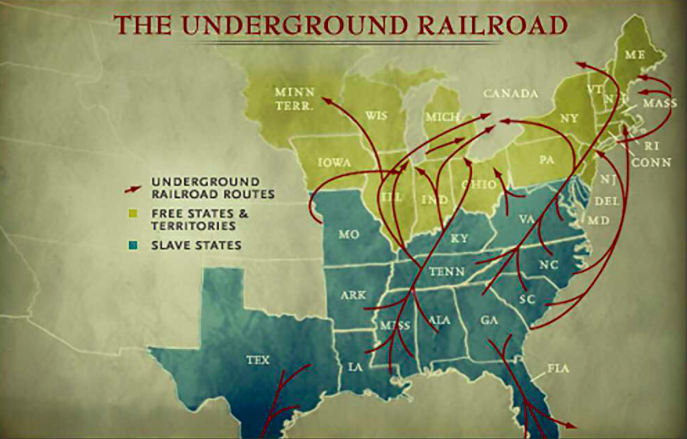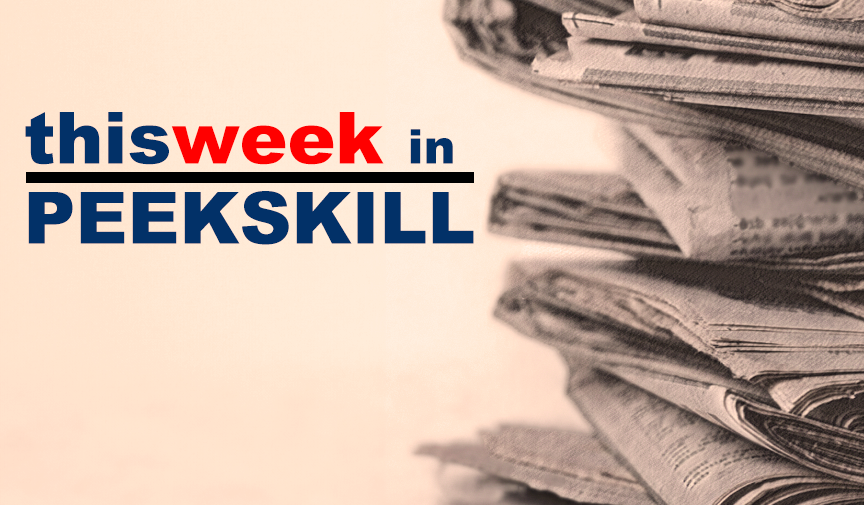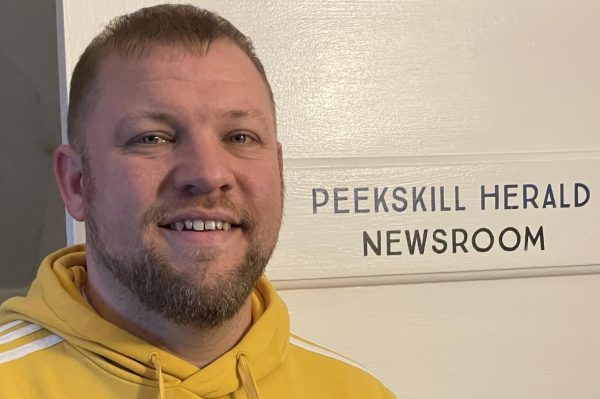In this small 4 square mile City we call home, we celebrate the previous generations of Peekskillians who played an integral part of the Underground Railroad. Every year LaFern Joseph, through the organization Sisters in Support, leads an Underground Railroad tour through Peekskill telling stories, pointing out locations where runaway slaves would stay on their journey to freedom, and honors the legacy of the Underground Railroad. As part of the Downtown Revitalization Initiative, a Harriet Tubman mural by Carlos Jefferson was installed on the side of The Fern Tree shop’s building.
On two separate occasions, Peekskill hosted Harriett Tubman sculptures in Jan Peek Square at the corner of Central Avenue and North Division Street that attracted people from all over the northeast. Harriet Tubman – The Journey to Freedom statue was on display from December 14, 2020 to February 28, 2021, and from May 1, 2024 to June 15, 2024, Harriet Tubman – The Beacon of Hope made Peekskill its temporary home. Peekskill is just one of many places throughout New York and the Eastern seaboard that played a part in the Underground Railroad.
The Underground Railroad is more complex than merely a collection of hidden passageways, dark tunnels, secret caves, and safe-houses we often think about that were used to conceal enslaved people making their way north towards freedom before and during the Civil War. The Underground Railroad was a movement, a carefully planned system that created a bridge between a life of degradation and oppression to the realization of freedom. The Underground Railroad was not clandestine places as much as it was people – free black and white abolitionists, former slaves, and other ordinary people working together to bring enslaved people north, often as far as Canada, to eventual safety and the promise of a new birth of freedom.
While evidence suggests that the Underground Railroad was a wide-spread network that included our region of the Hudson Valley – specific written proof is often hard to come by. As part of the Fugitive Slave Act, residents in free states who helped escaped slaves faced a $1000 fine, six months in jail, and possible charges of treason. Therefore, it was unlikely that many detailed lists and ledgers were kept or made public. Often, all that survives to tell the story is legend and lore – anecdotal evidence handed down within families and churches for generations.
In an active industrial village such as Peekskill in the mid-1800’s, with its central location on the Hudson River, the Village had easy access by water, easy access to the railroad and had central roads. In addition, the Village was home to free blacks such as local businessman Hawley Green and white abolitionists like Preacher Henry Ward Beecher (brother of Uncle Tom’s Cabin author Harriet Beecher Stowe and once considered the most famous man in America,) However, written confirmation of Peekskill’s part in the Underground Railroad can be difficult to find for various reasons.
In Albany, NY, however, researchers found exactly that – proof in print, as well as in the form of the still-standing residence of Stephen and Harriet Myers, which once hosted anti-slavery meetings and abolition work. Today, that same house serves as headquarters for the Underground Railroad Education Center.
Stephen Myers, a former slave here in New York (slavery existed in New York State until 1827) became a grocer, steamboat steward, and publisher of the Northern Star and Freeman’s Advocate newspaper. Myers became the leading figure in anti-slavery work in the Capital Region, and is believed to have helped hundreds if not thousands of enslaved people reach freedom. The Albany branch of the Underground Railroad, under his leadership, was regarded by many as the best run portion in the entire state.
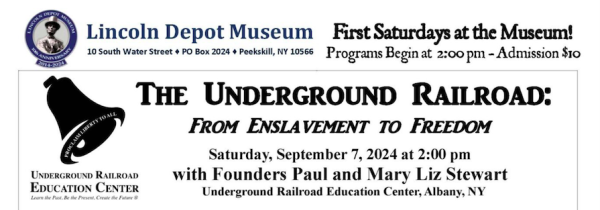
This Saturday, September 7, 2024 at 2:00 p.m. join the Lincoln Depot Museum as they welcome Paul and Mary Liz Stewart, founders of the Underground Railroad Education Center in Albany, NY. Paul and Mary will share not only the history of the Underground Railroad as it made its way through New York State, but of their findings specifically in Albany, and the restoration work they have performed to preserve the home of Stephen & Harriet Myers – two ordinary people who did extraordinary work for the Underground Railroad in Albany, and who used their own home as a station along the road to freedom.
The Underground Railroad: From Enslavement to Freedom is part of the Lincoln Museum’s First Saturday program. To hear the exciting story of Stephen & Harriet Myers, how the Underground Railroad Education Center came into existence, and what the Center does today, join the Lincoln Museum for this very exciting program. The special program costs $10 for adults and free for Museum Members.
Also, save the date for Saturday, September 21, 2024. On that day, the Lincoln Depot Museum will celebrate their 10 year Anniversary. The Friends of the Lincoln Depot Museum will welcome special guest violinist Daisy Jopling. For more information visit LincolnDepotMuseum.org.
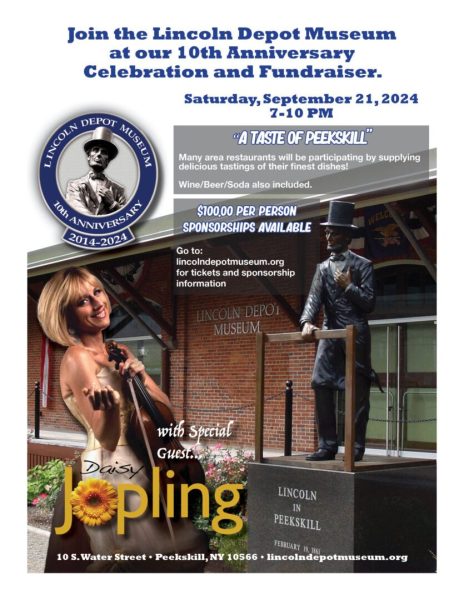
Visit the Peekskill Herald Events Calendar Features and the Peekskill Herald Event Calendar to see more local events.
If you would like to sponsor the Peekskill Herald Events Calendar, email [email protected].
If you would like to have your event publicized and advertised for free, please add your event to the Peekskill Herald Event Calendar. You may even get to become a highlighted featured event of the week. Like what you see? Click here to subscribe for free to the Peekskill Herald. Really like what you see and want to support local thriving journalism? Donate and become a member of the Peekskill Herald. The Peekskill Herald is a 501c3 charitable organization and all donations are tax-deductible.


